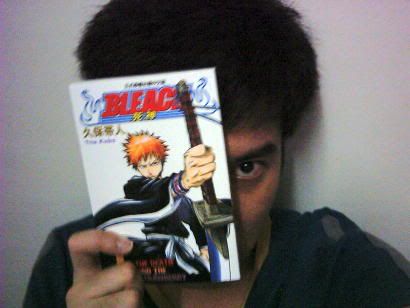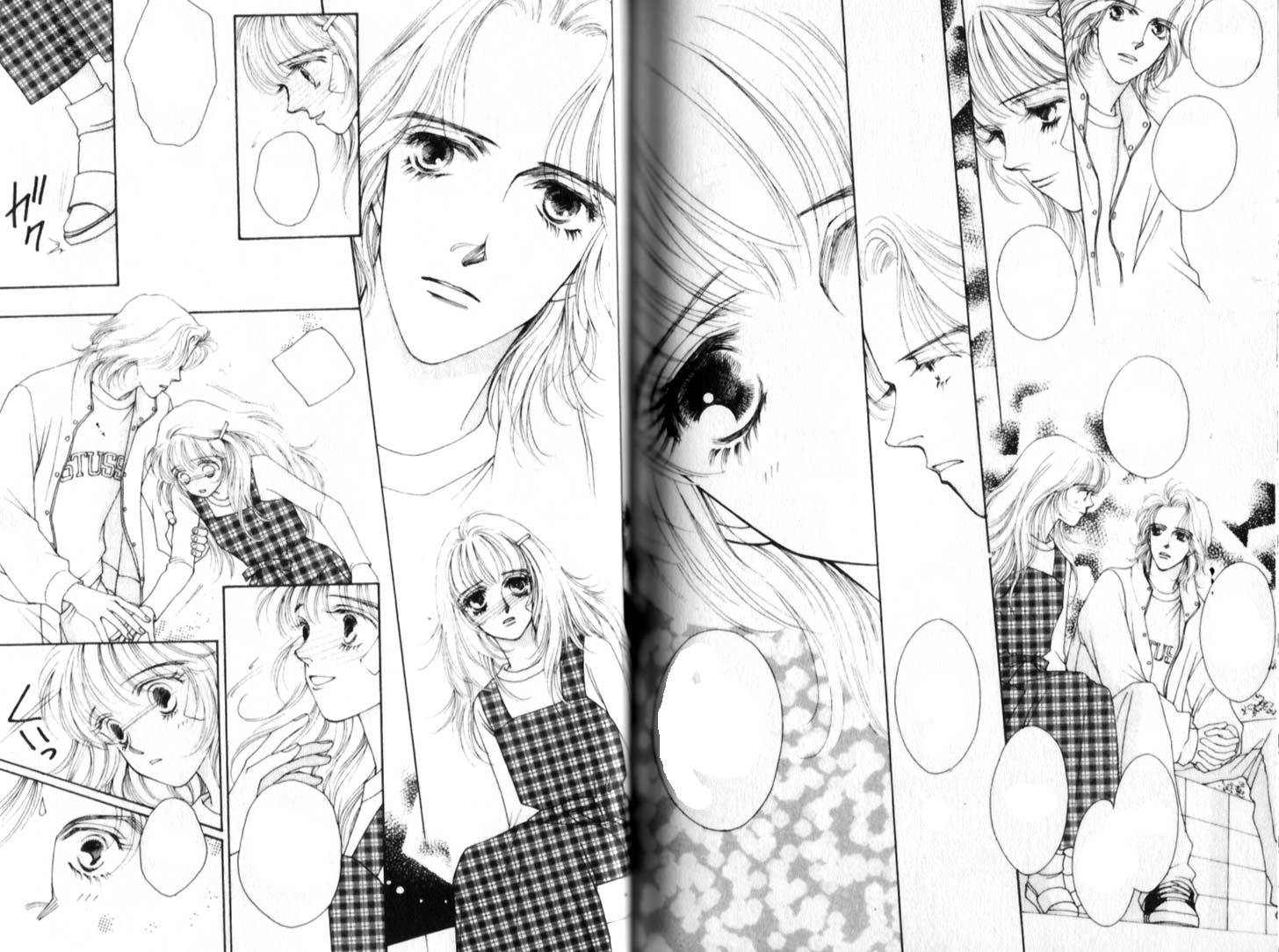Mainstream in this sense are the publishers of Manga, whom have to sate the incredible demand of Manga readers firslty in Japan, the Mecca of Manga. And nowadays, the rest of the world who also consumes Manga.
Most of the well-known and best selling manga are released WEEKLY, chapter by chapter, in a big phone-directory sized magazines called Tankobon. Then, when they get big enough, they get sold as smaller, A5 sized versions.
 (Image - the Weekly Shonen Jump 2004 New Year Special, can you spot some Big Name Manga here?)
(Image - the Weekly Shonen Jump 2004 New Year Special, can you spot some Big Name Manga here?) (Image - a blogger with his Bleach Tankobon)
(Image - a blogger with his Bleach Tankobon) (Image - Bleach Volume 1)
(Image - Bleach Volume 1)So, publishers like Shonen Jump here, are under pressure to churn out manga fast - so, out of logistics and a clarity, Manga has more or less fallen into very clear cut and very different categories to suit different readers.
Well, looking into Manga's Past History and wasn't too hard - I began asking alot of my friends, like myself, have been exposed to the culture than a a third of their young life. (Yes, v b Otaku, that's Hard Core Manga/Anime fans for you =P) I explained briefly I was looking on how Mainstream and the Independent groups affect the Manga art styles, story telling and the rest of the industry, then asked if they have also made such observations or felt such shifts during the many years they have been following this industry. Not surprisingly, they agreed, and shared some of their experiences.
The first thing they all agreed on were the very well established genres - Shojo for the girls, and Shonen for the Boys. This two main separators is where any Manga reader will begin.
Shojo
 (Image -Glass Mask by Suzue Miuchi)
(Image -Glass Mask by Suzue Miuchi)  (Image - MARS by Furuyumi Soryo)
(Image - MARS by Furuyumi Soryo)Storyline: Romance and Relationships, boys meets girl, someone MUST fall for someone...Drama, usually set in current day society, if not in famous cliche themes like love from ancient, bygone eras.
Art Style: Airy, light strokes; big doe eyes; lots of visual showing emotion; lots of shiny, soft patterns in background to create the mood; feminine and delicate features, even the male will look fragile and slender (and you wonder why so many popular Asian male actors/singers look like girls...their fans grew up on this)
Shonen
 (Image - Crossbone GUNDAM by Hasegawa Yuichi)
(Image - Crossbone GUNDAM by Hasegawa Yuichi) (Image - PARODY of Rurouni Kenshin by Nobuhiru Watsuki)
(Image - PARODY of Rurouni Kenshin by Nobuhiru Watsuki)Storyline: Adventure. or Sports. Someone must get something or must fight someone. Again. and again. and again.
But then again, the cliche shallow ones go on like Pokemon.
The deeper, better storylines reaches out to readers and inspire them to think, and to go out and catch a dream. or fight some fear.
Art Style: LOTS of action lines (note the diagonal strokes in both images), very solid, usually very detailed backgrounds/ fight sequences/ angles.
I suppose Streamlining it to Manga for Boys and Manga for Girls gets the story across faster and so, the reader "gets it" with maximum impact. And then come back for more.
Imagine getting a dreamy, lovey-dovey teenager girl to read a Manga of underdog high school footballers trying to go pro.
Or getting a basketball loving dude to sit through a romantic tale of a Chinese princess forbidden love for a Dragon prince.
Not likely to go down well...
Them Manga publishers are smart, I think focus on producing solely Shonen/Shojo because that's the kind of stories their readers want.

1 comment:
I agree with the generalization mostly.
But I think you forgot the point that many many mangas out there blur the lines between these two distinctions, story and art-wise. Perhaps you should've pointed that out?
Yes, shojo always involve relationships, but that doesn't necessary HAVE to be a romantic relationship. It just deals with emotions more. And its themes can go everywhere. There are even sport manga for shojo out there. And many many shojos (I've read a lot, so I should know) also goes with the theme of reaching for your goals, and some are peppered with action, if not speed lines. The art can also vary a lot, too.
Shonen as well. It's about action and sports, but there's romance, dealing with emotions, ect. And art varies as well.
I'm not saying the generalization is wrong. It's a handy way to sum things up for non-otakus, so that they can grasp something and then explore the range of each genre. I would've liked to see it pointed out that this formula isn't followed by all, especially the best creators, and that it can change a lot.
And you know, you never know. You surprise yourself. I've seen guys refuse to say they like romantic novels but secretly read it (stupid guys). I surprised myself when I started reading Death Note, Hikaru no Go, Bleach and Naruto and finding I loved them. There's a common thread out there. Me, a shojo fanatic.
Post a Comment